Valeria Suruceanu
ICOM Moldova
Project of the National Committee ICOM Moldova – Capacity Building of Cultural Heritage Protection in Times of Emergency.
During 31 March-6 April 2014 at the National Art Museum of Moldova training course Capacity Building of Cultural Heritage Protection in Emergency Situations designed for museum personnel and specialists working in the field of cultural heritage was held.
Cultural heritage is the greatest achievement of mankind, the basis of its present and future development, and its protection is the most important task of a modern society. Not only the history but also current events show us that cultural heritage may be subject to different hazards, from natural disasters to armed conflicts and man-made disasters. Destruction of cultural property during armed conflicts, acts of vandalism perpetrated against monuments and other objects of cultural heritage, numerous illegal excavations, as well as art objects stolen from museums, archives, libraries and other institutions are not only a real threat to the preservation of cultural heritage, but also to the study, as well as for the public access to the common cultural heritage. In addition, natural disasters and economic regress is a major threat to cultural property. Earthquakes, floods, fires and other disasters are sources of damage, and in some cases, even the complete ruin of cultural objects.
The problems of cultural property protection in the event of armed conflict and in peacetime are under the scrutiny of international law. More than half a century ago, May 14, 1954 in Hague, the Convention on the Protection of Cultural Property in the Event of Armed Conflict was signed, which is the main international treaty on the protection of monuments and works of art in time of war. "The High Contracting Parties undertake to respect cultural property situated within their own territory, as well as on the territory of other High Contracting Parties, banning the use of these values, structures and to protect them directly adjacent areas in order, which may lead to the destruction or damage of property in the event of armed conflict, and by refraining from any act of hostility directed against such property "[1, p.4].
Provisions of the Convention were amended in 1999 with the Second Protocol, which confirms the naturalness and continuity of the process of improving the international legal norms. However, international law for the protection of cultural heritage becomes effective only if the State has ratified it.
Cultural heritage protection is an important goal of each individual sovereign state, and measures for the protection of cultural property are subject primarily to national legislation.
The actual state of the protection of cultural heritage in Moldova today, is unfortunately very poor. In many cases, laws are violated or do not have enough action. Moldova has not yet ratified the Second Protocol to the Hague Convention, which lists specific preparatory measures in peacetime to protect cultural property against the foreseeable effects of an armed conflict [2.5]. Preparatory measures taken in time of peace for the safeguarding of cultural property against the foreseeable effects of an armed conflict pursuant to Article 3 of the Convention shall include, as appropriate, the preparation of inventories, the planning of emergency measures for protection against fire or structural collapse, the preparation for the removal of movable cultural property or the provision for adequate in situ protection of such property, and the designation of competent authorities responsible for the safeguarding of cultural property.
Despite the fact that in recent years, national policy makers increasingly recognize the need of preventive measures to protect cultural property, however, concrete steps in this direction are often not taken under the pretext of lack of financing. The problem is becoming increasingly important because of existing and emerging conflicts in our region. Recent developments in a number of museums in Kiev during clashes on the streets in February, forced more and more to think about the need for a preliminary safety measures for immovable and movable cultural heritage. Efforts to preserve the culture should be made by both the state and society, as the measures for the protection of cultural heritage not only require considerable investment, but also the personal responsibility of all citizens. The society together with non-governmental organizations should require political leaders and authorities to take the necessary and timely measures to protect cultural property.
National Committee ICOM Moldova activity is aimed at the preservation, development and presentation to the society of tangible and intangible cultural heritage; the Committee is the initiator of several projects related to the development of museums in the Republic of Moldova, as well as the preservation of cultural heritage of the country.
It is very difficult to influence public policy in the field of cultural heritage of the country, but nevertheless, ICOM Moldova could provide the real help with professional expertise of international experts, as well as specific training programs for professionals working in the field of cultural heritage. Of great importance in this regard are trainings, which should provide professionals from the field of heritage, not only with theoretical knowledge but also with practical experience for the successful solution of the existing problems. During 31 March-6 April 2014 at the National Art Museum of Moldova the training course Capacity Building of Cultural Heritage Protection in Times of Emergency, designed for museum personnel and specialists working in the field of cultural heritage was held. The main aim of the project was to contribute to the protection of cultural heritage in Moldova. In connection with all the above, the regional training of museum professionals is timely and highly relevant to the museum community in our region. The training in Chisinau united museum professionals from Kherson and Odessa (Ukraine), Transnistria, Gagauzia, as well as other regions of Moldova.
The training team consisted of specialists from ICOM, while training staff was composed of local professionals and international experts, who were involved in the implementation of the FAC 2012: Gael de Guichen, Special Advisor to the ICCROM Director-General, Italy; Aparna Tandon, ICCROM Project Specialist, Collections Unit, Italy; Salah Abdel Hamid El-Sharief, Egyptian Foundation for Rescuing Heritage.
The National Committee ICOM Moldova Project – Capacity Building of Cultural Heritage Protection in Times of Emergency in the Republic of Moldova – originates from the opportunity to apply for projects funding offered by Prince Claus Fund for Culture Emergency Response, offered to the participants of the ICCROM training First Aid for Cultural Heritage in Times of Conflict in 2012 (FAC2012). As a participant in the above-mentioned training, Valeria Suruceanu, chairman of the National Committee of ICOM Moldova, decided to carry out the proposed project, which aimed to organize training in Chisinau. To ensure higher efficiency of the project and successful implementation of the local activities, the National Committee of ICOM Moldova asked for the support and cooperation of the representatives of the Ministry of Culture of the Republic of Moldova, Agency for Inspection and Restoration of Monuments, National Art Museum of Moldova, ICOMOS Moldova, whose knowledge was very valuable for the project and whose commitment to the protection of cultural heritage was visible in all their activities. The cooperation between organizations above also stood behind the project proposal. The concept of the project, carried out in accordance with the requirements of the call for proposals, but adjusted to the local context, was submitted to the Prince Claus Foundation in January 2013. The proposal had been considered interesting and selected by Prince Claus Foundation for funding. In January 2014, the Prince Claus Foundation allocated funds which were used for the successful realization of the training in Chisinau, Republic of Moldova. The content of the project and its objectives also attracted the interest of ICCROM specialists who provided Ms. Valeria Suruceanu with ICCROM's involvement and cooperation in the project
As a result of the training 16 participants gained knowledge and practical experience necessary for operational decision making and first aid of museum collections in emergency situation caused by natural disasters and armed conflicts.
The selection of participants was based on their protection responsibilities of movable and immovable heritage in specialized institutions and their professional skills, in order to create a primary aid team.
Initially the training course assumed the participation of specialists from Moldova and Trans Dniester region, but due to the current crisis in Ukraine, ICOM Moldova proposed the colleagues from ICOM Ukraine to take part in the training. In such a way the training was attended by three participants from Ukraine, two participants from Trans Dniester Region of Moldova, one participant from Gagausian Autonomous territory, two local participants from other districts of Moldova and 8 participants from different museum and heritage institutions from Chisinau.
The training course intended to provide the participants with necessary knowledge and skills in order to prepare the cultural properties for emergencies. The primary endpoint was the training of first aid team that could be helpful and prompt in cooperation with governmental and nongovernmental organizations involved in the project to protect and secure the movable and immovable heritage in emergency situations.
The main objectives of the training course were: to acquire knowledge on international and local legislation on the protection of movable and immovable heritage; to get an overview of the values associated with cultural heritage; to acquire knowledge regarding the diversity of materials and their vulnerability; to make the assessment and management of cultural heritage in emergency situations; to understand how preparatory measures can be undertaken in order to improve the response to emergency situations; to have a successful communication with all stakeholders.
The topics were presented by means of theoretical and practical lectures held by local and international teachers. The role-playing situations and discussions were also part of the training process. At the end of the training the participants were able to provide first aid to cultural heritage, to assess the risks to which the cultural heritage is subject in emergency situations, to understand the responsibilities and priorities (who is doing what and in which moment) and to have the ability to prioritize actions to achieve operations to preserve cultural heritage in danger. Also, the participants strengthened their capacities for communication and negotiation skills.
The course took into consideration both aspects of the heritage – movable and immovable, but with a special focus on the museum collections in order to ensure the preparation of primary protection measures required in the regional and local museums.
First aid for the cultural heritage – this item demonstrated the techniques and tools necessary to improve the effectiveness of the protection of cultural heritage given the fragility of the materials and providing necessary first aid.
Communication, logistics and planning – this element offered the participants the ability to understand how to assess the risk, strengthening at the same time communication and negotiation skills in emergency times for a more effective work with diverse stakeholders and for the active participation of the community in the protection of cultural heritage.
The course also presented the impact of conflict on cultural heritage, increasing the awareness of the dangers the conflicts can cause over cultural relics and monuments.
Mr. Gael de Guichen, Advisor to Director General of ICCROM, a consultant and professor of preventive conservation of museum collections, with a number of parties, held a theory and practical sessions on a variety of natural materials of which monuments and works of cultural heritage are made and their vulnerability by numerous natural and human aggressors. Much attention has been paid to the training in terms of modern principles of museum storage facilities, as well as the problem of evacuation of museum exhibits and creating temporary storage facilities for museum collections. Ms. Aparna Tandon, ICCROM Project Specialist, Department of Collections, First Aid Training Coordinator of cultural heritage in conflict, familiarized participants with the basic types of conflicts and natural disasters, as well as the main source of risk to cultural heritage. Participants received a basic knowledge of the concept of "risk management" of cultural heritage, as well as the basic measures of museum collections preparation for emergencies and evacuation during floods, fires, earthquakes and violent incidents.
An important stage of the training workshops was the first aid to museum exhibits under the guidance of experts Abdel Hamid and Aparna Tandon.
The riots and related disaster situation in Cairo 2011-2013 were provided in the report of Abdel Hamid El Sharief, Egyptian Cultural Heritage Rescue team (EHRT) (Cairo, Egypt). The report states that specialists can ensure that emergency preparedness is based on modern methods and technologies to reduce the risk; these actions are efficient and effectively work in practice, providing stability, timely and appropriate response of personnel in emergency situations.
Training course was completed by the final training simulation of an emergency, in which participants were able to feel the reality of the threat of an emergency, as well as to apply the earlier training knowledge and skills for operational decisions. According to most participants, this case study was of great importance for team work and helped to identify all the shortcomings and problems associated primarily with the issue of communication.
Immediately upon completion of the course, two presentations were made at the meetings of experts from the sphere of culture in Ukraine and Armenia. The first presentation was prepared by the Ukrainian Sergey Dyachenko, April 9th within the framework of the project "Actual Museum: dynamic strategy development."
The second presentation was made in the cycle of workshops to develop cultural policies of the Eastern Partnership, April 11. Presentation of the project had a great response from more than 50 representatives of the sphere of culture in Armenia, Georgia, Ukraine, Azerbaijan and Belarus. And of course, in this connection, the idea of creating a regional network of cooperation between the countries of the Eastern Partnership in the field of risk management of cultural heritage can be a basis for further joint decision of one of the major problems associated with the preservation of cultural heritage of the region.
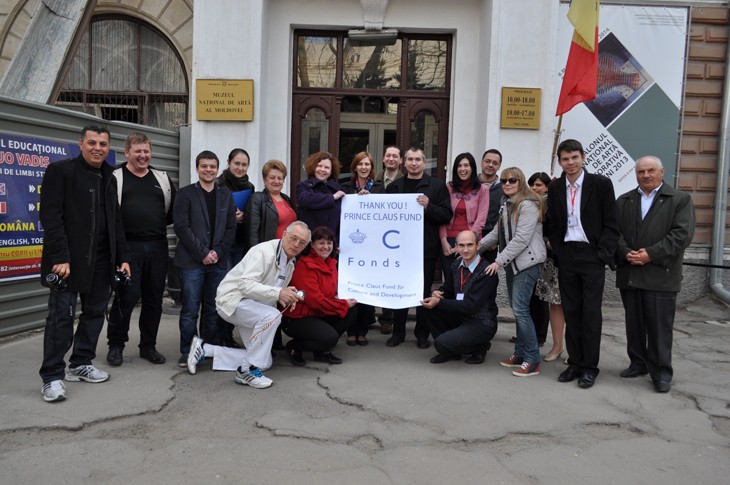
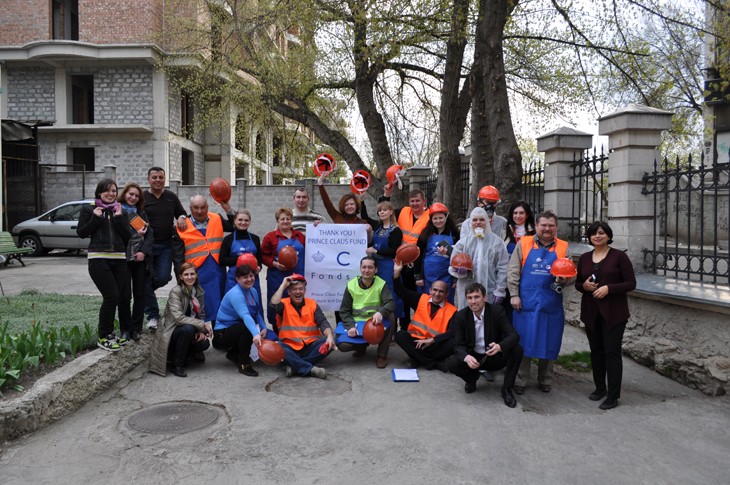
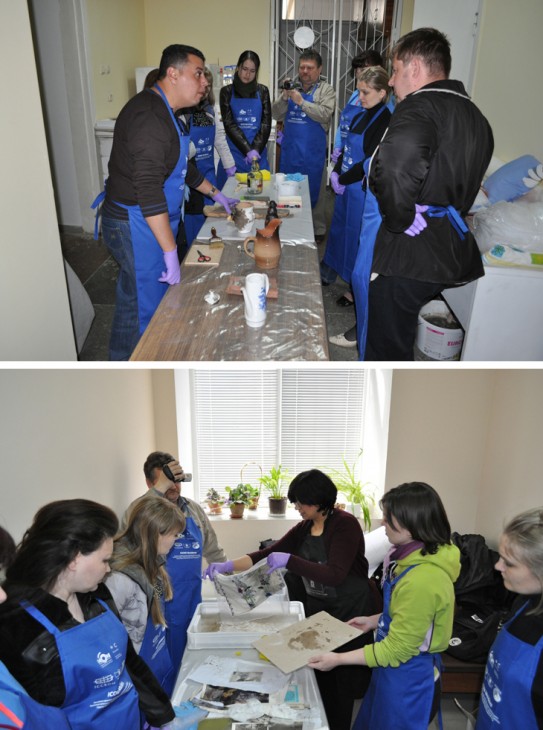
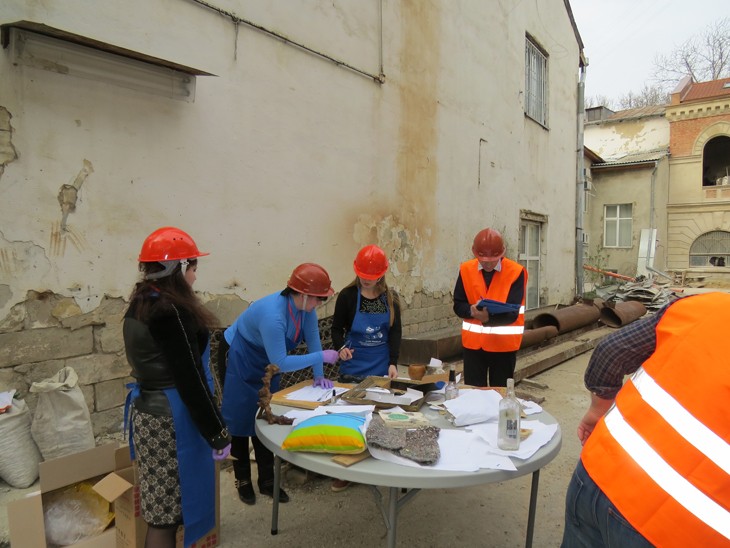
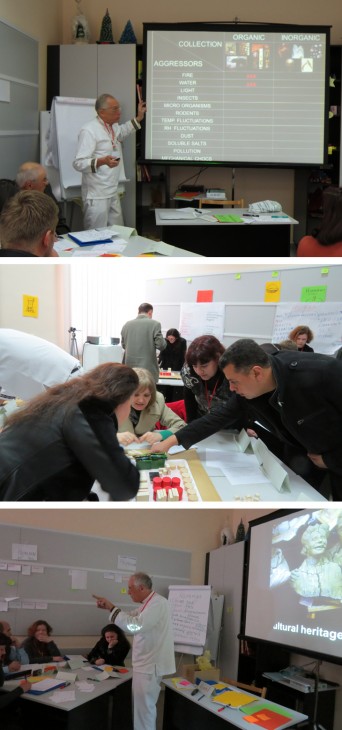
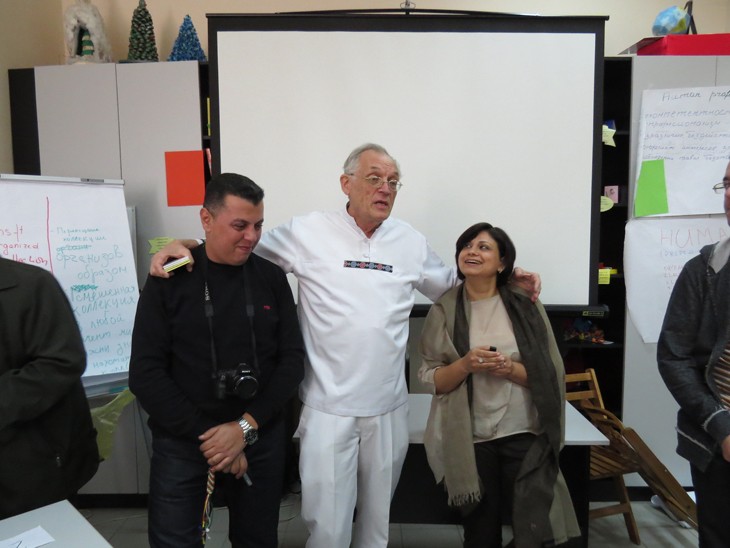
|
Heritage Conservation Regional Network Journal

|
|
Introducing_Young_People_to_the_Protection_of_Heritage_Sites ENG
Details »
|
|
Networking |
Policies |
|
|
Public awareness |
Workshops |
|
 The project is funded by the
The project is funded by the European Union
EU is not responsible
for the content of this website
 |
 |
 |
 |
 |
 |
 |
 |
 |
|
RCCHD Project: Office 16b, Betlemi ascent, 0105 Tbilisi, Georgia Tel.: +995 32 2-98-45-27 E-mail: rcchd@icomos.org.ge |
© 2012 - Eastern Partnership Culture Programme |





